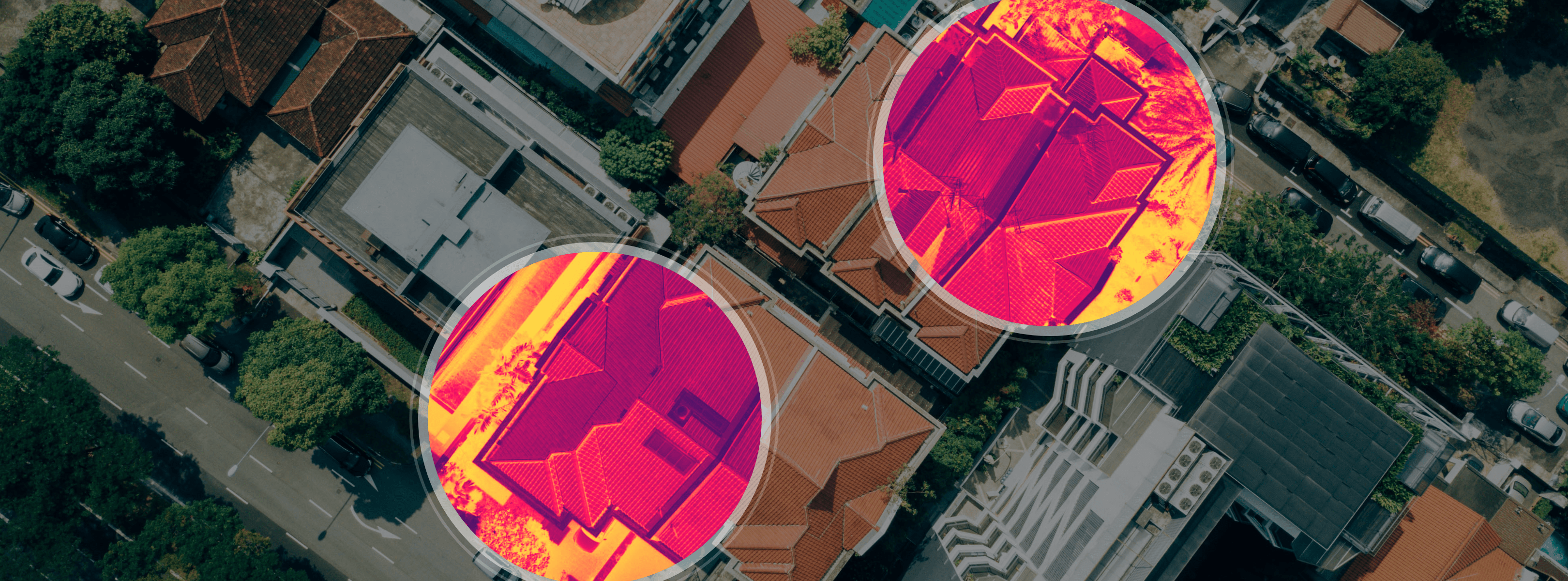Thermal imaging sensors have become an accessible and viable payload for drone inspections in energy, property maintenance, and insurance. From wind turbine blades to commercial HVAC units, thermal data is providing insights that would otherwise be hard to see or invisible to the naked eye. And now that it’s being harnessed by adaptable, versatile platforms such as DJI’s new Matrice 300 RTK, the possibilities are endless.
Our Thermal Insights Roof Report is one such example. It’s an end to end solution that combines our Pilot Network, the latest in drone technology, the expertise of our in-house team, and an always-improving AI-assisted anomaly detection platform. From thermal data we can pinpoint water ponding, solar panel deficiencies, HVAC unit issues, and much more.
Below we’re going to dig into some of the insights that can be gleaned from integrating thermography into your usual inspection procedures. As you’ll see, adopting thermal insights can make a huge difference to the way your team discovers and mitigates structural issues.
Thermal Data to Assess Renewables Assets
It’s fair to say that drones have revolutionized the way that large-scale wind and solar farms are maintained. Traditionally, manual inspections have been costly, time-consuming, and potentially dangerous.
Take wind turbines as a prime example. These huge structures rely on a delicate aerodynamic balance to perform to their maximum potential. Even minor damage or manufacturing defects can cause inefficiencies. To get a closer look, engineering teams have typically used a combination of ropes and platforms, which can be precarious to say the least.
Before putting staff at risk and taking major maintenance decisions, energy companies are now turning to drones to spot the details that would otherwise be hard to see or invisible to the naked eye by incorporating drones equipped with thermal sensors.
This leads to a greater understanding of issues such as leading edge erosion, delamination, and top coat damage for wind turbines.
On solar farms or rooftop solar assets, thermography can quickly pinpoint areas of concern.
Standard RGB images can be used to flag issues such as a bird nesting on the panel or debris left behind after a storm. But the harder to spot problems, such as module faults, wiring issues, and fuse failures, are best discovered when using a thermal camera to gather radiometric data.
Thermography and Smarter Building Inspections
Many of the benefits of using thermographic data carry over to conventional property inspections, too.
For starters, a drone with a thermal sensor can quickly and safely scale a building and gather data to assess its structural integrity. People don’t have to be put in harm’s way as part of the investigative process.
And, just as thermal imaging can be used to spot otherwise invisible solar panel defects, it can highlight issues below the surface of buildings that wouldn’t be picked up with a standard camera. Whether it’s missing insulation or water ponding, these minor details can quickly escalate into expensive problems. Catching them early is vital.
Many of a building’s common structural issues coincide with temperature changes. Air leaks, defective insulation, water infiltration breaches in hot water pipes, damp, and electrical faults can all be easily detected with the right equipment.
Heating, Ventilation and Air-Conditioning (HVAC) units, which are typically on the roofs of buildings, can also be assessed using thermal images. Thermal data can highlight when they are operating incorrectly so that maintenance teams can get to the root of the problem and ensure the humidity and temperature of their buildings is as required.
To explore the benefits of aerial thermography and find out more about how it can support your structural inspections, read more about our Thermal Insights Roof report. You can also download a sample report to see how our in-house team turns thermal data into actionable insights.




.png?width=360&name=Banner%20Templates%20(4).png)
